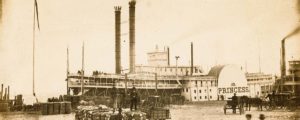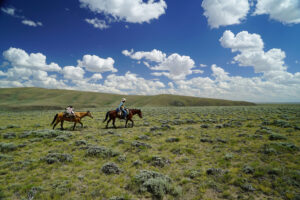Quincy, Kansas, once had it all. A prosperous community in Greenwood County in southeastern Kansas, it rose to serve farmers and cattle ranchers in the surrounding region and later offered some light industrial opportunities. Its history began in the 1860s, though Quincy wasn’t platted until 1879.
Development came in stages, as did the town’s name. The first known settlement was called Tailholt. The government awarded the town a post office in 1867, but under the name Sheridan. That changed to Quincy two years later.
During its genesis, the town had a school, church, general store and blacksmith along with the post office. Quincy became an important shipping point for area cattle thanks to its proximity to the Chicago, Kansas & Western Railroad. By 1904 the main street boasted a second church, two grocery stores, a two-story hotel, café, drugstore, bakery, blacksmith shop, bank, dry goods and millinery store, barbershop, furniture store, doctor’s office and a Ford dealership. Two newspapers saw short stints: The Quincy Gazette opened in 1904, The Quincy Enterprise the next year.
In 1898 two strangers arrived in Quincy, sought out local man Bud Gillette and challenged him to a race. Gillette was known as one of the fastest foot racers in the country. As word spread the race was on, most townspeople placed their bets on the local boy. One of the strangers held the betting money, while the other bragged about defeating Gillette. Some farmers even sold their cows to have extra money for wagering. The race began on the appointed day. The runners were racing toward a hedgerow on the course when they both jumped over it. They ran to a waiting motor car driven by the man with the race purse and fled the county. Apparently Gillette was a participant in the scam from the beginning. There was no winner, but they left behind many losers.
A robbery of another kind took place at 2 a.m. on Friday, March 20, 1903, as three charges of nitroglycerin blew open the safe and blew apart the rest of the bank. A pair of thieves made off with close to $2,000, two gold watches and other valuables. They escaped town on a railway handcart, but authorities caught the destructive duo four days later in nearby Yates Center and brought them to the county seat at Eureka to face justice.
Quincy relied heavily on the support of the farming population around it. Its peak likely came in the early 1920s, when oil companies discovered wells in the region and expanded into the new fields.
The lean 1930s dust bowl years sounded the knell for many small rural towns, and Quincy was no exception. Small farmers and tenants were unable to compete with the growing commercial enterprises. The use of large, expensive machinery made it no longer viable for small farms to compete. Forced off the land by foreclosures and low prices, most rural people gravitated to Wichita and Topeka.
During World War II people found more stable employment in the factories turning out much needed supplies. The railroad closed its line for good in 1946, and that marked the curtain call for Quincy.
Quincy’s light industry included a lumberyard, which handled building supplies, and a small factory that made a spun-aluminum corn popper known as the Atom Pop. J. Edwin Lewis and wife Martha founded the company in 1948, employing 17 people in a town with a population of 300. Its output topped 20,000 poppers a year. Atom Pop remains in business, but its main factory moved to Fredonia, Kan., after the Lewises’ daughter sold the business.
As late as the 1970s there were enough residents to warrant a grocery store. Robison’s Grocery, operated by Barbara Robison, remained in business until no longer profitable, given the distance for deliveries of staples on the gravel road. The store has since fallen down. Today about 15 people live at the old town site.
Originally published in the December 2012 issue of Wild West. To subscribe, click here.




